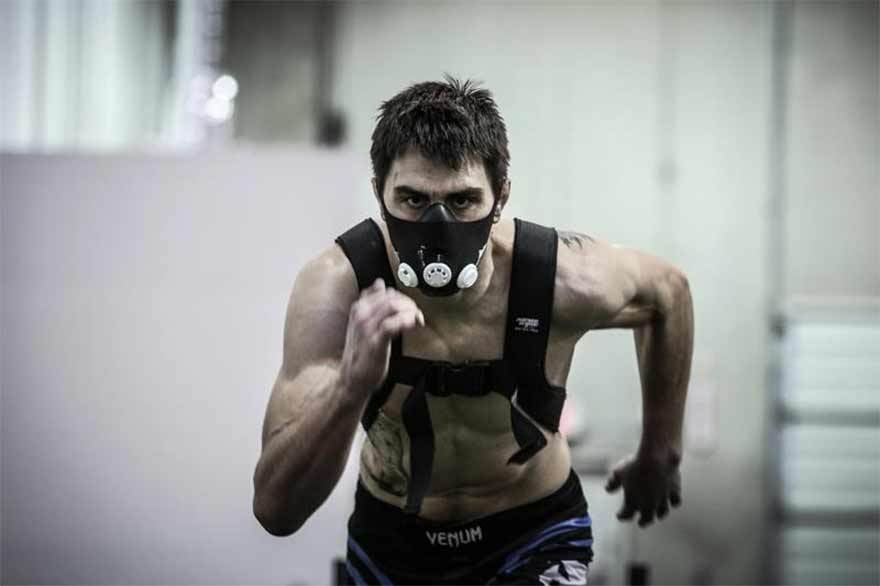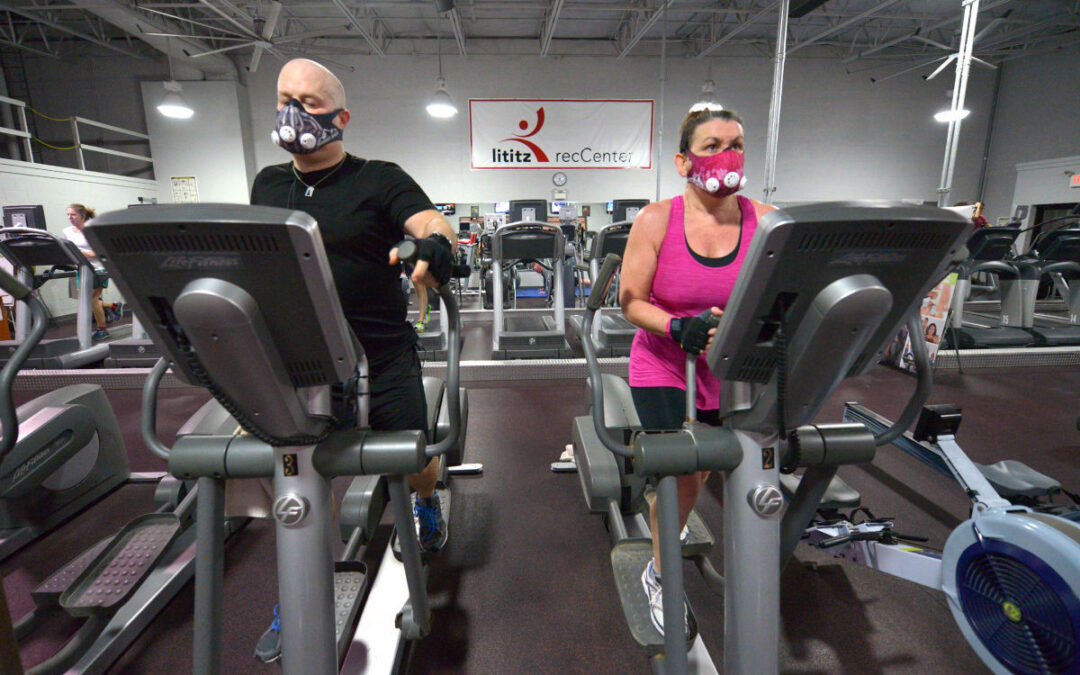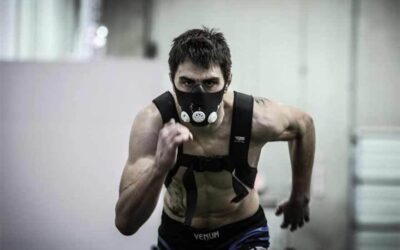Stepping up from the beginner level to a more challenging program requires careful planning and implementation. Once you get comfortable to using the Training Mask to complete most of your program using a mild air resistance setting you are ready for intermediate level.
The TrainingMask air resistance system allows step by step adjustment of the intensity of your respiratory resistance to systematically improve your strength and stamina. By following this program you will be able to use different respiratory resistance training techniques and train in three different “Zones” in order to build up your power, strength and endurance of the respiratory muscles.
Step 1: Choose Your Activity
The first thing you want to do is to select an activity. Depending on the type of activity, you will be able to use different air resistance settings which will place you in one of the three different respiratory training zones.
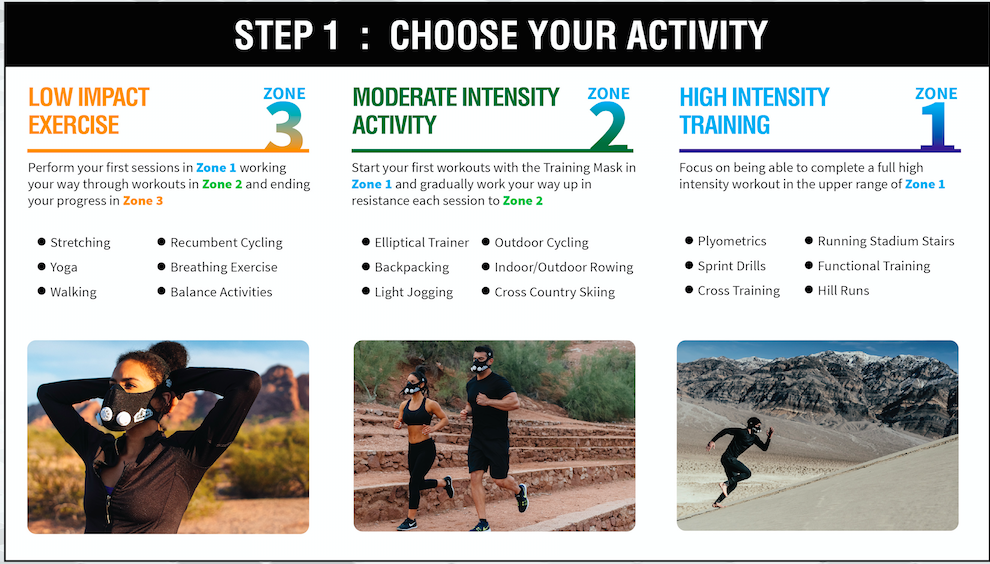 Zone 1 uses a 3x-6x air resistance and will develop the endurance of the respiratory muscles. Zone 2 uses a more difficult air resistance setting of 9x-12x which will strengthen the respiratory muscle. The last and most challenging is Zone 3 using an air resistance setting of 15x-18x, which will develop the power of your lungs.
Zone 1 uses a 3x-6x air resistance and will develop the endurance of the respiratory muscles. Zone 2 uses a more difficult air resistance setting of 9x-12x which will strengthen the respiratory muscle. The last and most challenging is Zone 3 using an air resistance setting of 15x-18x, which will develop the power of your lungs.
As you would expect, you can train in Zone 3 when you are doing low impact exercises which do not require that much effort, such as: stretching, yoga, recumbent cycling, breathing exercise, walking or balance activities.
While doing these activities you will begin to develop your tolerance to air resistance and start to improve your breathing technique and boost your lungs power. Build up the intensity by performing your first sessions in Zone 1 working your way through workouts in Zone 2 and ending your progress in Zone 3.
Zone 2 works really well for moderate intensity activities which can still be performed while using a relatively high air resistance setting. These activities include backpacking, outdoor cycling, light jogging, indoor/outdoor rowing, elliptical training or cross country skiing.
Adding air resistance to these activities will definitely feel more difficult than what you are used to. You can overcome this by starting your first workouts with the Training Mask in Zone 1 and gradually work your way up in resistance each session to Zone 2. This is a great way of building up your respiratory strength.
Zone 1 is your only choice when you are doing high intensity training such as sprint drills, running stadium stairs, functional training, cross training, hill runs or plyometric. Focus on being able to complete a full high intensity workout in the upper range of Zone 1.
Once you are able to complete your HIIT sessions with your Training Mask on you can start adding more volume to your workouts using the same air resistance settings. This will build up your respiratory muscle endurance.
Step 2: Start Your Resistance Progression
Regardless of what sport you are training for, no matter your type of activity, you always want to develop your air resistance tolerance level from the ground up. Don’t just skip and jump through the air resistance levels. This is an ineffective and unsustainable training method.
You want to progressively overload your lungs with more resistance once they get adapted to the current settings. Once something becomes easy, add more resistance.
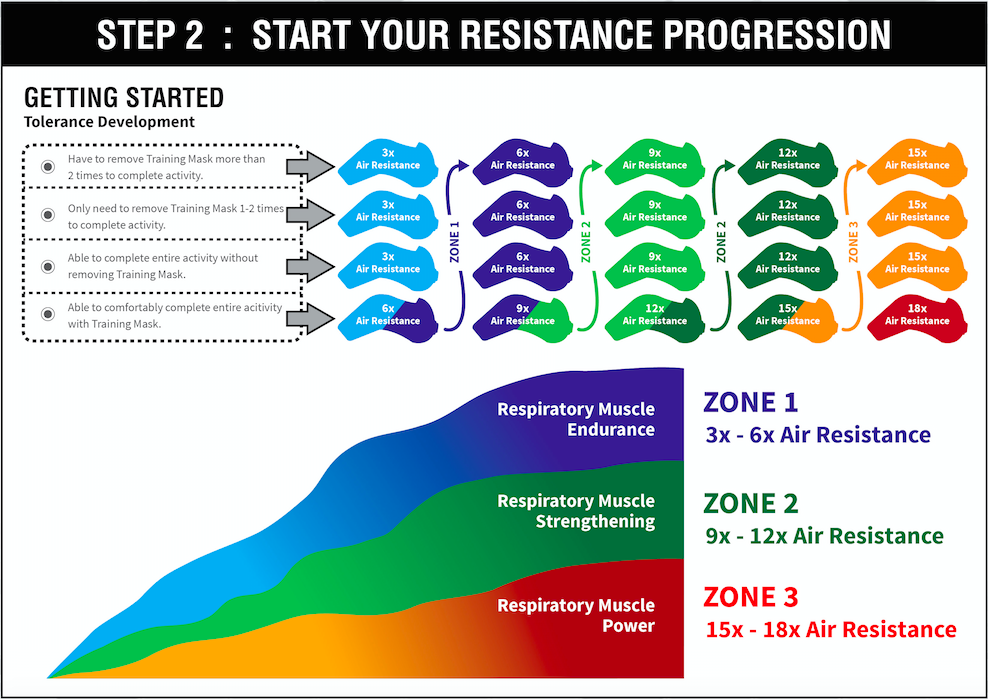 For example, if you are doing your workout on a 6x air resistance setting and you have to remove your Training Mask two or more times to complete the activity, you will need to keep training using the same 6x air resistance setting. Keep doing that and your respiratory muscles will get more efficient. You will notice that you will be able to complete your session by removing the Training Mask just 1-2 times. After that you will need to remove it just once per session, and so on and so forth.
For example, if you are doing your workout on a 6x air resistance setting and you have to remove your Training Mask two or more times to complete the activity, you will need to keep training using the same 6x air resistance setting. Keep doing that and your respiratory muscles will get more efficient. You will notice that you will be able to complete your session by removing the Training Mask just 1-2 times. After that you will need to remove it just once per session, and so on and so forth.
Eventually you will have enough breathing power and endurance to complete your entire activity without taking off the Training Mask at all. That is the point when you want to dial into the air resistance and increase the difficulty to the next level. Focus on progressing through the air resistance settings.
Bottom line
For a strong, all-round respiratory system you want to work on all of the training zones. Develop your endurance but don’t forget about power and strength. It doesn’t matter if you are a marathon runner or a cross-fitter. It doesn’t matter if you are an amateur or a pro. The Training Mask will work in the exact same way, by adapting to your own personal fitness level and goals.
You can save and print the full intermediate guide image below:






